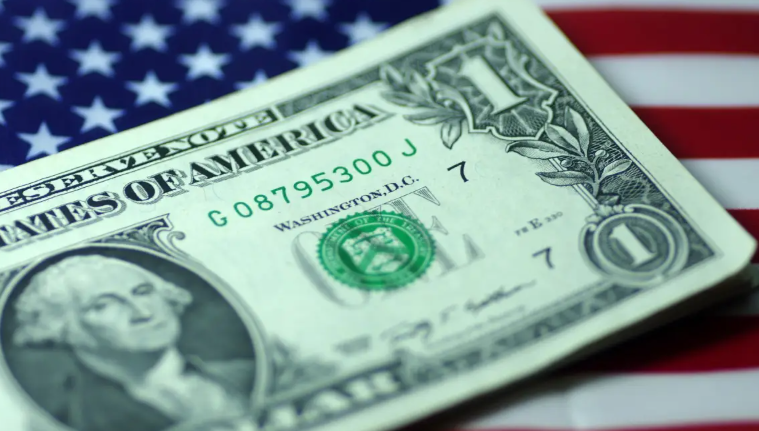How Long Will the Dollar Continue to Rise?
Advertisements
The complex landscape of U.S. monetary policy in 2023 presents a perplexing contradiction that has captured the attention of economists, investors, and policymakers alike. One of the most striking phenomena we observe is the ongoing strength of the U.S. dollar, which has shown resilience despite previous assertions favoring a “weaker dollar” policy. The dollar's ascendancy since December has starkly contrasted with the prevailing expectation of a downturn typically seen at the end of the fiscal year.
Historically, the dollar has seen peaks reminiscent of its previous patterns, particularly looking back to 2016-2017 when the currency reached its heights before retreating. At that time, many predicted the dollar's ascent with a notable peak in January 2017. There is a palpable concern about the potential for the dollar to repeat this cyclical pattern of surging and subsequently declining. Analysts are closely watching for indicators that might signal a shift in this trend.
The timeline for any potential downturn, however, appears to be distant, contingent on several macroeconomic factors. Currently, the rise of the dollar seems to be fortified by favorable conditions—what one might consider “timing and location.” As long as specific policies have yet to be implemented, speculation abounds regarding future growth prospects and inflationary pressures. In contrast, Europe’s economic landscape presents a more troublesome narrative, marked by sluggish growth and political uncertainties in powerhouse nations like Germany and France, which adds to the dollar's competitive advantage.
Moreover, a glance at the futures market reveals that the enthusiasm for a strong dollar isn't overwhelmingly extreme. This indicates a level of caution among traders—an acknowledgment that the market's momentum could shift, albeit, for now, such a deviation seems unlikely. Analysts suggest that pivotal macroeconomic narratives will play out over time, leading to essential re-evaluations of asset values, particularly concerning the dollar.
To contextualize this, we must delve into the macro narrative underpinning asset positioning. Historical patterns inform us that market narratives may not lend themselves to precise market timing but can provide a framework for understanding asset value. In the past decade, certain trends have been markedly clear.
The systemic elevation of the dollar reflects broader global shifts that, for the immediate future, appear irreversibly entrenched. Post-2020, major economies like China and the European Union have grappled with significant structural transformations, while the United States exhibits greater economic resilience following massive stimulus measures. Currently, conditions do not favor the dollar index retreating below the 100 mark.
Looking forward to 2025, the prospects for the dollar index being able to eclipse the peaks achieved in 2022 seem dim. The dollar index reached a dramatic high of 114.8 in September 2022, a pinnacle that may remain unbroken unless there are substantial global policy shifts, such as sweeping tariffs and a reconsideration of Federal Reserve rate hikes. As things stand, the likelihood of these scenarios materializing appears minimal.

Moreover, within the emerging policy landscape, an overly strong dollar may not be favored. The narrative surrounding fiscal policy and economic support structures—while dressed in the proactive attire of fiscal stimulus—might reveal tensions wherein initial implementations could inadvertently lead to tighter fiscal conditions. The complexities of these policies create a significant challenge for maintaining market stability, possibly generating feedback loops that disrupt rather than support economic goals.
The challenges are clear: while a strong dollar could theoretically alleviate concerns surrounding U.S. debt sustainability by inviting foreign investment, it risks inflating trade costs and amplifying inflationary expectations. The outcome could lead to a volatile debt market that extends its ripples into the stock market and beyond, jeopardizing broader economic well-being.
As we face these challenges, key policy questions emerge: How to stabilize inflation and ensure the health of the U.S. debt market? A prudent approach may involve transitioning toward a cautiously firm fiscal stance alongside a flexible monetary policy from the Federal Reserve. The complexity lies in balancing these tensions—tightening fiscal discipline while maintaining an accommodating monetary environment, especially in the face of high U.S. debt levels.
Furthermore, there lies an intriguing opportunity in trade negotiations. Tariffs could serve dual purposes: not only would they aim to protect U.S. imports, but they could also incentivize foreign nations to purchase more U.S. debt. This arrangement could potentially help stabilize the debt market while curbing the depreciation of non-dollar currencies, presenting a balanced path toward economic recovery and trade rebalancing.
It’s crucial to see the dollar within a broader context: while dollar strength is significant, dynamics in other regions—particularly Europe and China—may exert pressures on the dollar. The outlook for Europe appears particularly pivotal; any signs of economic stabilization, or even recovery, could substantively impact dollar valuations.
In consideration of these factors, our outlook on the dollar adopts a cautious tone. While we anticipate the dollar could peak before receding, leading us to believe that this inflection point may occur in the first quarter of 2023, we expect it will not surpass the highs witnessed in 2022. Looking ahead, the complexity of the dollar’s performance in the latter half of the year warrants continued scrutiny, as the interplay of these global economic narratives unfolds.
Leave a comment
Your email address will not be published